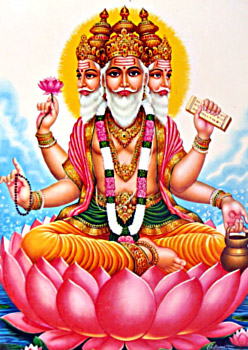 The land of the Suhmas is mentioned for the first time probably in the Ayaranga-sutta, one of the oldest sacred books of the Jainas. According to the epics and the Puranas, the Suhma country is distinguished from Vanga and Pundra, the two other important divisions of Bengal. The Epic account of Bhima`s stern conquests makes the country of the Suhmas distinct from Vanga and Tamralipta.
The land of the Suhmas is mentioned for the first time probably in the Ayaranga-sutta, one of the oldest sacred books of the Jainas. According to the epics and the Puranas, the Suhma country is distinguished from Vanga and Pundra, the two other important divisions of Bengal. The Epic account of Bhima`s stern conquests makes the country of the Suhmas distinct from Vanga and Tamralipta.
The distinction between Suhma and Vanga (and Pundra) is supported by the epic and Pauranic tradition, which distinguishes Suhma, one of the eponymous `Baleya Ksatras`, from his brothers Anga, Vanga, Kalinga and Pundra. It has been said in the Sabha Parva of the Mahabharata, the Pandavas are described as having subdued the Pundras and Vangas, and led their victorious army to Suhma. In Kalidasa`s Raghuvamsa also, Suhma has been distinguished from the sea coast and the country of the Vangas. According to the Pavanaduta of Dhoyika, the Suhma country seems to have been situated on the Ganges. In Rajasekhara`s Kavyamimamsa, the Suhma country along with Brahma to the north, Vanga and Pundra, was included in a list of the Janapadas of the east. In the Brhatsamhita it is located between Vanga and Kalinga.
It has been said in history that according to epic tradition, Suhma was once conquered by Pandu and at another time by Kam. It was in Sumbha or Suhma that Lord Buddha had delivered the Janapada-kalyan Sutta, while dwelling in a forest near the town of Desaka.
Some of the historical record says that the Suhmas and the Radhas were one and the same people; but from the Ayaranga-sutta, one may gather that the Suhma country formed a part of the Radha country, the other important part having been called Brahma. In many of the epics of the early ages names Suhma and Brahma have always been used to denote the Radha country which was almost fully covered by these two Janapadas. It has also been said that it is highly probable that the two Janapadas, Brahma and Suhma, of the epics, the Puranas, the Kavyamimamsa, and other Sanskrit sources are identical with the two divisions of Radha.





















